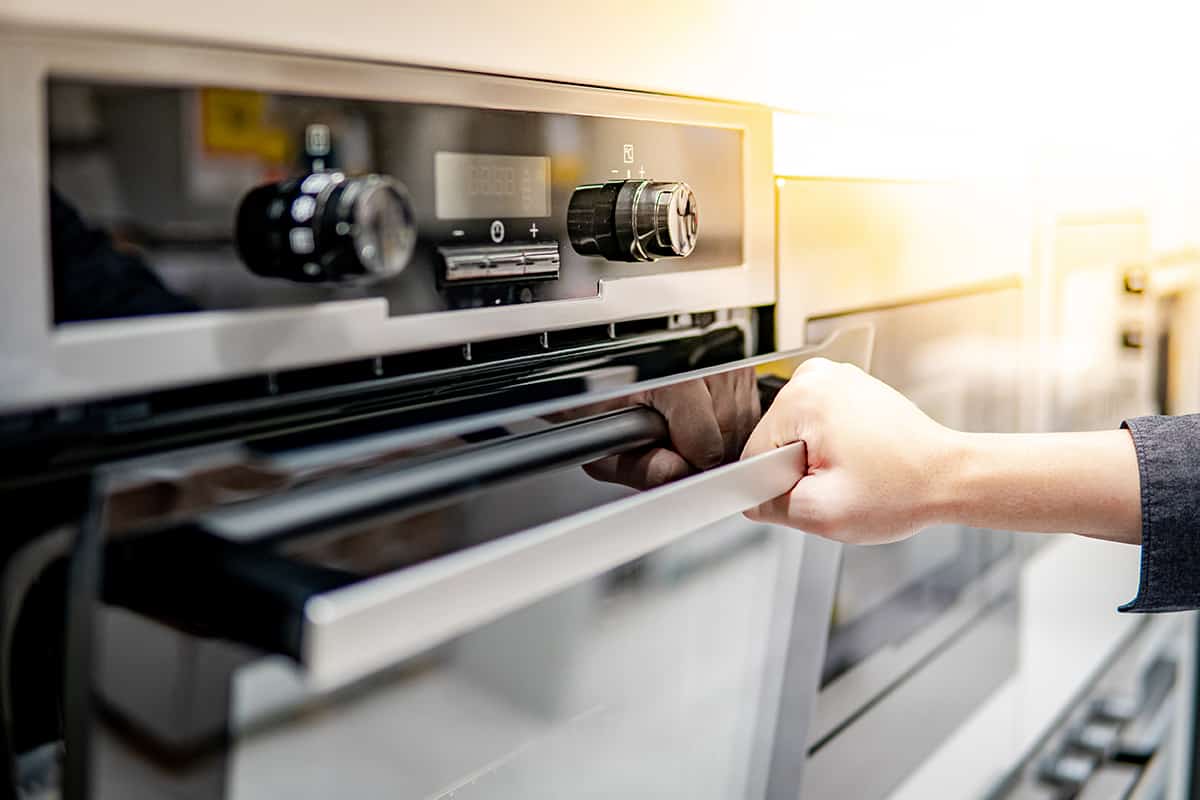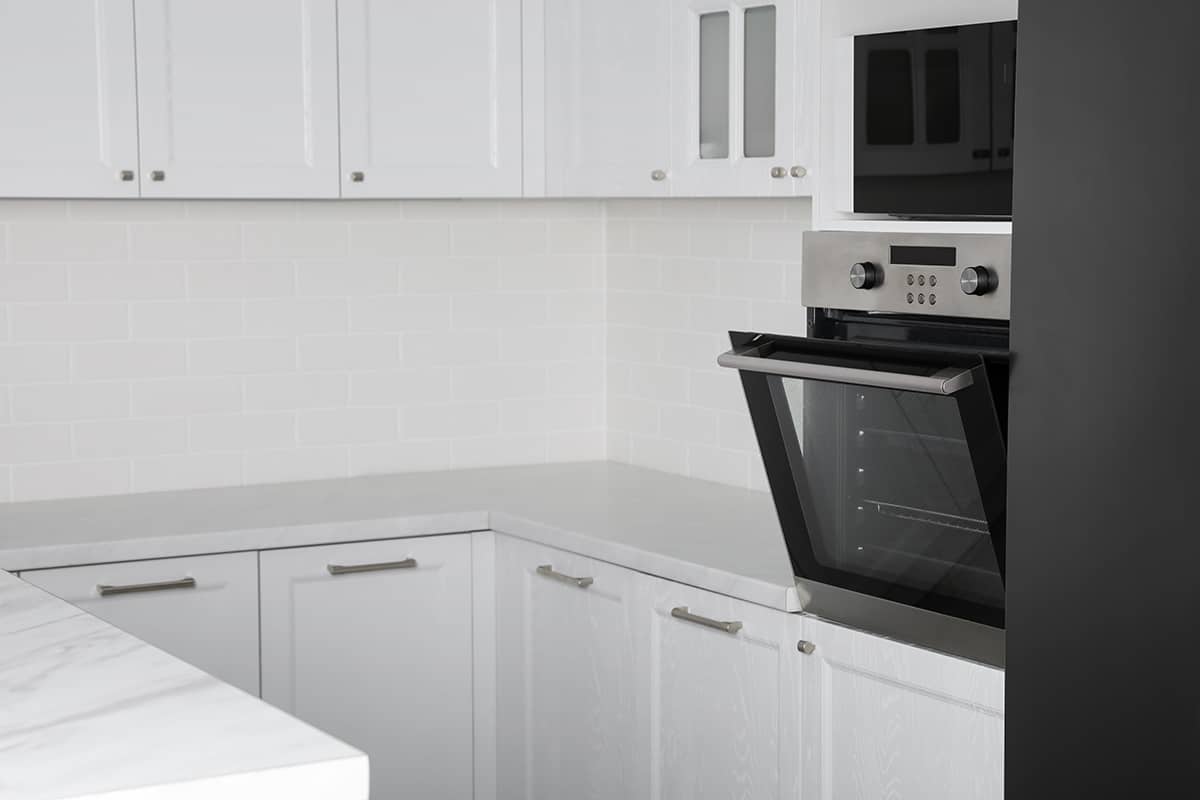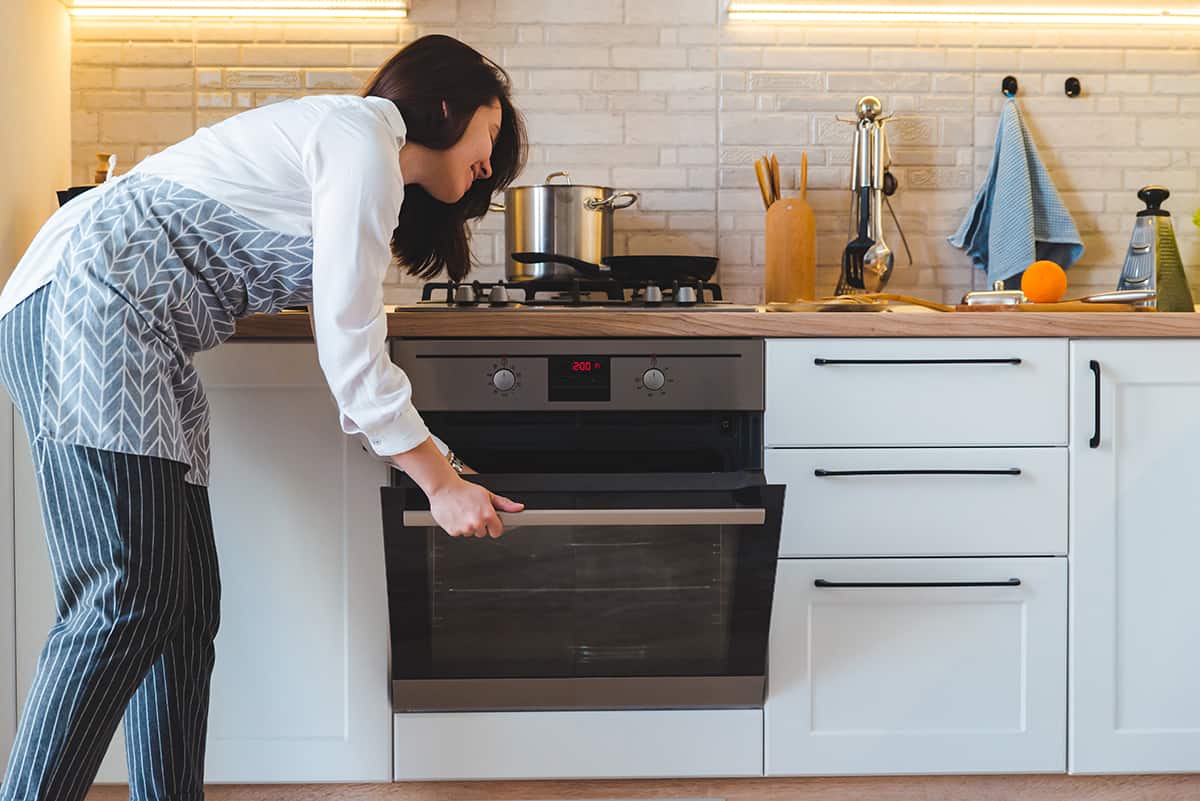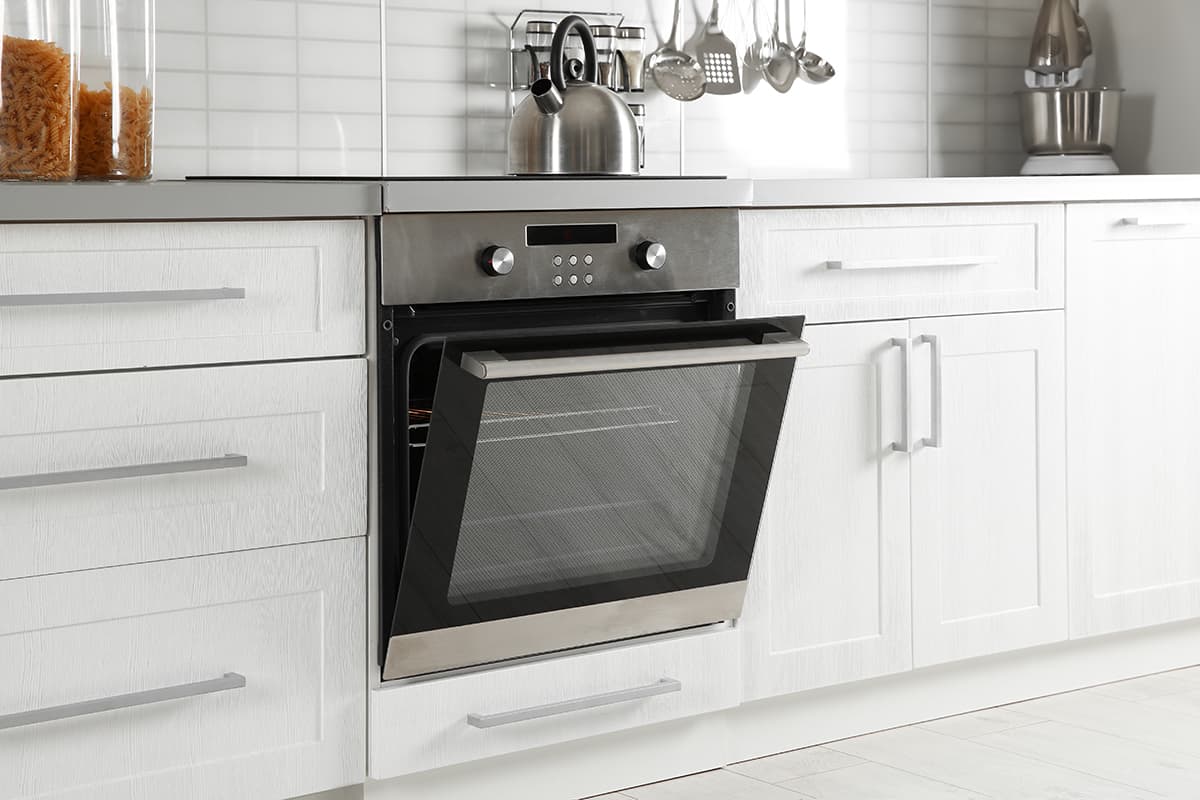Ovens are a staple appliance in most kitchens. You can use them for baking pizzas, finishing cooking steaks, and even proofing bread dough (just turn on the oven light). But after you’ve prepared an entire feast in your oven, how long will it take for it to come back down to room temperature?
Usually, ovens require 1 to 2 hours to cool down if you leave the door shut. Opening the door slightly can reduce cooling times to just 10 to 30 minutes. How long it takes ultimately depends on the type and size of the oven.
For the remainder of this guide, I’ll explain how different factors affect your oven’s cooling time, whether or not you should leave the oven door open to cool quicker, and how long it will take a self-cleaning oven to cool down.
Factors That Affect Oven Cooldown Times
You’re probably aware that an oven doesn’t immediately reach its set temperature—e.g., 450°F—the moment you turn it on. It can take anywhere from 10 to 20 minutes for an oven to come up to temperature, which is a process known as preheating. Similarly, it will take your oven some time to come back down to room temperature after you’ve used it for baking.
As previously stated, it can take up to 120 minutes for an oven to come back down to room temperature after turning shutting it off. However, there are several factors that can affect the oven’s cooldown time, which I’ll describe below.
Cooking temperature
It should be clear that the temperature of the oven will determine how long it will take to cool down. The further the oven’s cooking temperature is from room temp (about 70°F), the longer it will take to cool down. For instance, a 150°F oven will take considerably less time to return to room temperature than an oven set to 550°F.
Gas or electric

There are 2 main fuel source types for residential ovens—gas and electric. Apart from their upfront costs and operating costs, gas and electric ovens can also differ in terms of cooling times.
In general, electric ovens take longer to cool down compared to gas ovens.
Gas ovens rely on a constant flow of fuel (natural gas or propane) to produce heat. When you shut off the fuel source, the burners will immediately turn off, and the metal components inside the oven will begin cooling down.
On the other hand, electric ovens rely on a series of heating coils to heat the inside of an oven. When you turn it off, the heating coils will remain hot and continue to cook whatever is inside the oven.
Convection or conventional
Both convection and conventional ovens have a series of burners that increase the temperature of the oven’s cooking chamber. The difference is that convection ovens have a built-in fan that distributes heated air evenly throughout the oven, thereby cooking your food from all angles.
When you shut off a convection oven, the fan will continue to spin to vent air out of the oven. This can reduce the oven’s cooldown time significantly. Conventional ovens, on the other hand, need to cool down the “natural” way—i.e., as described in the previous section.
Oven size
Ovens range in size, usually from 2.3 to 6.3 cubic feet. There are also double ovens with increased baking capacities of 7 cubic feet and beyond.
If you’ve ever wondered why it takes less time for a smaller oven to preheat than a larger one, it’s because the burners have a smaller space to heat up. Larger ovens require longer preheating times and, hence, require longer cooldown times, as well.
Insulation
While you may not see it when you open the door, ovens come with insulation to keep heat confined within the walls. You would need to disassemble the inner casing of the oven to access the fiberglass or CMS insulation.
When you shut off an oven, the insulation will help in retaining some of that heat. Fiberglass insulation is usually “less efficient” than CMS, though the differences are minute and depend on cooking environment.
Another thing to note is that damaged or broken insulation won’t retain heat as well, thus cooling down your oven more quickly.
Open or shut the door

The final factor to consider when contemplating oven cooldown times is the status of the door—is it open or not?
It should be quite clear that an open-door oven will cool down a lot more quickly than a closed oven. This is because of the second law of thermodynamics, in which heat naturally flows from hot objects (the inside of your oven) to cooler objects (the ambient air in your kitchen).
Also, how wide you open the door will affect the oven’s cooldown times. The typical oven will cool down in as little as 10 minutes when the door is open as wide as it can get.
Should You Open Oven Door to Cool Down?

We learned that opening an oven door will cool it down more quickly, but should you open the door? It depends on the oven model.
For gas ovens, it’s generally safe to open the door to release heat more quickly. As long as there are no flammable objects (or flammable people and pets) walking around the kitchen, please feel free to open the door as wide as it can go.
Electric ovens are a bit different. Some ovens come with complex components that are designed to heat up and cool down at specific times. You run the risk of damaging them if you force them to cool down by opening the oven door.
Another thing worth mentioning is that opening your oven door will release heat and food odors into the kitchen air. This might not sound like a bad thing during the fall and winter, but in the summer, when your kitchen is already unbearably hot, you should probably let the oven come back down to room temp without additional help.
How Long Does It Take Self-Cleaning Oven to Cool Down?
One of the best things that have happened to our modern world is the advent of self-cleaning ovens. When this function is activated, the oven will superheat itself to temperatures far exceeding normal cooking temperatures (800°F and beyond). The purpose of this is to burn solid food soils to a crisp, making them easier to remove from your oven’s floor and walls.
This begs the question: how long does it take a self-cleaning oven to cool down? The typical 450°F oven requires up to 2 hours, so a self-cleaning oven will take twice as long, right?
Not necessarily. On average, ovens will return to a safe temperature just 30 to 90 minutes after a self-cleaning cycle. The entire process can take upwards of 4 hours, including 1 to 3 hours of cleaning.
You’ll know when the oven is safe to open when the lock light turns off, and the auto-lock mechanism disengages automatically. After that, you can use a wet rag to pick up the ashes of your casseroles from yesterday.
Can You Stop a Self-Cleaning Oven Midcycle?
Yes, you can, as long as your oven model allows it.
In many cases, you simply have to press the Cancel or Clear button to stop the self-cleaning cycle. However, the door will remain locked until the oven comes down to a safe temperature.
Stopping the self-cleaning cycle should not damage the oven in any way, as long as you don’t force the door open or do this repeatedly within a short period.






